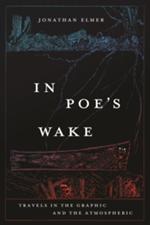Edgar Allan Poe is one of American culture’s most recognizable literary figures, his life and works inspiring countless derivations beyond the literary realm. Poe’s likeness and influence have been found in commercial illustration and kitsch, art installations, films, radio plays, children’s cartoons, and video games. What makes Poe so hugely influential in media other than his own? What do filmmakers, composers, and other artists find in Poe that suits their purposes so often and so variously? In Poe’s Wake locates the source of the writer’s enduring legacy in two vernacular aesthetic categories: the graphic and the atmospheric. Jonathan Elmer uses Poe to explore these two terms and track some deep patterns in their use, not through theoretical labor but through close encounters with a wide sampling of aesthetic objects that avail themselves of Poe’s work. Poe’s writings are violent and macabre, memorable both for certain grisly images and for certain prevailing moods or atmospheres–dread, creepiness, and mournfulness. Furthermore, a bundle of Poe traits–his thematic emphasis on extreme sensation, his flexible sense of form, his experimental and modular method, and his iconic visage–amount to what could be called a Poe “brand,” one as likely to be found in music videos or comics as in novels and stories.

In Poe’s wake : travels in the graphic and the atmospheric
ISBN: 9780226833491
Format: Paperback
Publisher: University Of Chicago Press
Origin: US
Release Date: August, 2024


